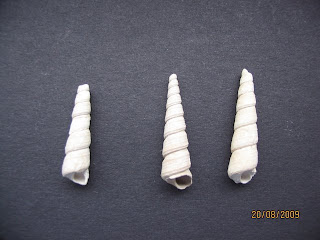I don't know if the grass verges around the lanes and avenues where we live are unusual in any way, but they do seem to be very rich in meadow plant species. I've been looking at them for a year or so now and my list of species present is growing. Despite the regular cutting by local house owners and the frequent management by the local authority there's a lovely show of wild flowers through the year.
The verges are the last remaining bits of the meadows present in the area before the housing development here in the early 1960s and, as far as I can tell, were pasture land as opposed to arable. The soil pH is just on the acidic side of neutral, to be expected on New Forest gravels, clays and sand and the vegetation reflects this with some anomalies.

As a taster, here's some of the more unusual species (for urban verges) found so far: lady's smock, bugle, chamomile, heath and lady's bedstraw and autumn lady's tresses (see above).
 A short, if expensive, ferry ride across to Hamstead Bay on the Isle of Wight brings you forward a few million years (rather than back a million years or so - as some may say after having been to the Isle of Wight in February!) to the Oligocene and along the beach are revealed small pieces of turtle shell.
A short, if expensive, ferry ride across to Hamstead Bay on the Isle of Wight brings you forward a few million years (rather than back a million years or so - as some may say after having been to the Isle of Wight in February!) to the Oligocene and along the beach are revealed small pieces of turtle shell.

 As a taster, here's some of the more unusual species (for urban verges) found so far: lady's smock, bugle, chamomile, heath and lady's bedstraw and autumn lady's tresses (see above).
As a taster, here's some of the more unusual species (for urban verges) found so far: lady's smock, bugle, chamomile, heath and lady's bedstraw and autumn lady's tresses (see above).